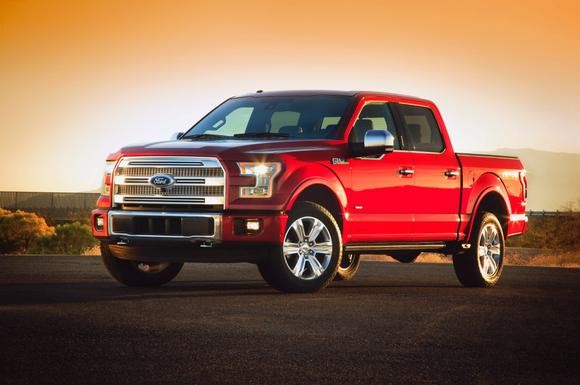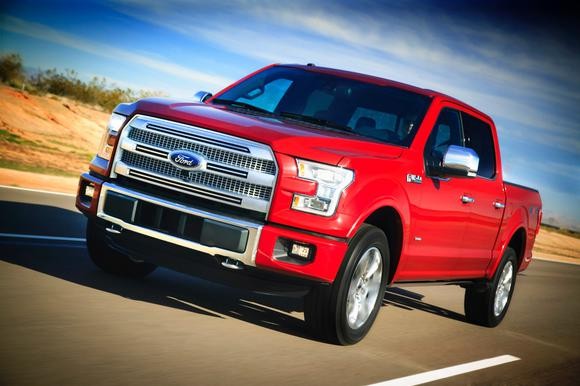Ford s Future In The World s Largest Economy Ford Motor Company (NYSE F)
Post on: 16 Март, 2015 No Comment

Summary
- The Chinese automotive industry is growing. In order strengthen its fundamentals in this market, the company approved a $5 billion investment program in 2011.
- Ford plans to introduce a further 15 new models in 2015 throughout China as it hopes to see annual sales reach the 1.2 million vehicles sold per year figure.
- Ford plans to import its Lincoln brand in China in 2015, instead of producing it. This could backfire as Ford would have to deal with import duties.
- A rise in the company’s costs has caused Ford to cut its projected profits for the year to $6 billion. The slowdown of the Chinese economy is another challenge.
- The long term goal is to make the Chinese auto industry an integral part of its sales composition. Next year might prove fruitful as it introduces more models into China.

It seems like Ford Motors (NYSE:F ) has its work cut out for it in China. The largest automotive market in the world is currently booming with growth and is expected to continue this trend till the end of the decade, topping up at 30 million units annually, compared to the United States’ 17 million units per year. The Dearborn based automaker was a late entry into the world’s largest economy, preceded by its American counterpart General Motors (NYSE:GM ). Ford currently controls less than 5% of the Chinese automotive industry while General Motors controls around 15%, but Ford has taken steps to ensure its survival and growth in China.
Through their joint venture initiative in China, Changan Ford’s annual passenger car sales were up by 22% this year as they sold 906,613 units. with an aim to breach the 1 million vehicles sold target by the end of the year. Ford realized that their venture in China was tardy and they tried to make up for lost time by investing $5 billion as a four year plan back in 2011. The investment started paying off when in 2013 Ford sales in China jumped by 49% as the company introduced their Explorer and Ecosport series, expanding on their earlier introductions of the Kuga and the Focus. A part of this large investment strategy is opening up two new plants, one in Hangzhou and another in Chongqing, in an effort to increase supply to meet ever increasing demands. The automaker plans to introduce a further 15 new models in 2015 throughout China as it hopes to see annual sales reach the 1.2 million vehicles sold per year figure. The company seems to be confident about their investment strategy as it hopes that the Chinese automotive industry will account for 40% of its total sales by the end of the decade.
With the automotive industry in China booming, it is only inevitable that the demand for luxury cars will also rise in the region. Looking at the rising demand for luxury vehicles, Ford has planned to launch its Lincoln brand in China in 2015, with plans to import the car instead of producing it in the mainland. Such a strategy could backfire as Ford would have to deal with the added cost of import duties that would leave their premium vehicles in a difficult position against rivals who are already well positioned in China. The premium vehicles market in China is already dominated by the German trio of BMW, Audi and Mercedes, all of whom have plants producing their luxury models locally and enjoy good deal of popularity amongst the elite of China. Ford hopes that the popularity of their American luxury brand amongst the locals will trump the mounted import duty costs that will be associated with its Lincoln brand.
Conclusion
Though the recent turmoil of the financial crisis of 2007 took a hefty toll on the American auto industry Ford pulled through without the help of a structured government bailout, eventually making a pre-tax profit of $8.6 billion in 2013. Despite the outstanding performance in difficult situations it seems like Ford can’t get a break. The company’s warrant costs in South America and Europe expanded to $658 million in the third quarter as compared to $250 million in the previous quarter, forcing Ford to cut its projected profits for the year to $6 billion. Moreover there are signs that the Chinese economy’s growth might be slowing down. The world’s largest economy is skirting through falling producer prices and consumer prices as a real danger of deflation looms over the economy. The Chinese central bank has maintained interest rates at 6% since 2012, expressing their stance that the fall in prices is a short term scenario that should smooth out soon. Regardless of the slowing down in the speed of growth, the Chinese economy is still the fastest growing economy in the world, which should put Ford in a reasonable position to expand its market share in the country.
Ford Motors’ stock has been trading around the $15.70 per share mark after tumbling down to $13.26 per share in October. The stock recovered as the sale of the Lincoln brand surged by 25% after a series of popular advertisement campaigns (including a spoof of the advertisement by comedian Jim Carrey) proved to be effective in stimulating sales. Cash dividends stood at 12.5 cents a share as the 52-week fluctuation showed the stock reaching a high of $18.12 per share and a low of $13.26 per share. With its long term goals set to make the Chinese auto industry an integral part of its sales composition, investors should look towards Ford’s ability to complete its short term and medium term goals in order to maximize their gains. Currently it seems like the next year might prove fruitful for the company as the introduction of more models into the Chinese economy will boost its popularity amongst the locals, but Ford will soon have to develop another investment strategy if it wants to further progress in China.
Disclosure: The author has no positions in any stocks mentioned, and no plans to initiate any positions within the next 72 hours. (More. ) The author wrote this article themselves, and it expresses their own opinions. The author is not receiving compensation for it (other than from Seeking Alpha). The author has no business relationship with any company whose stock is mentioned in this article.














